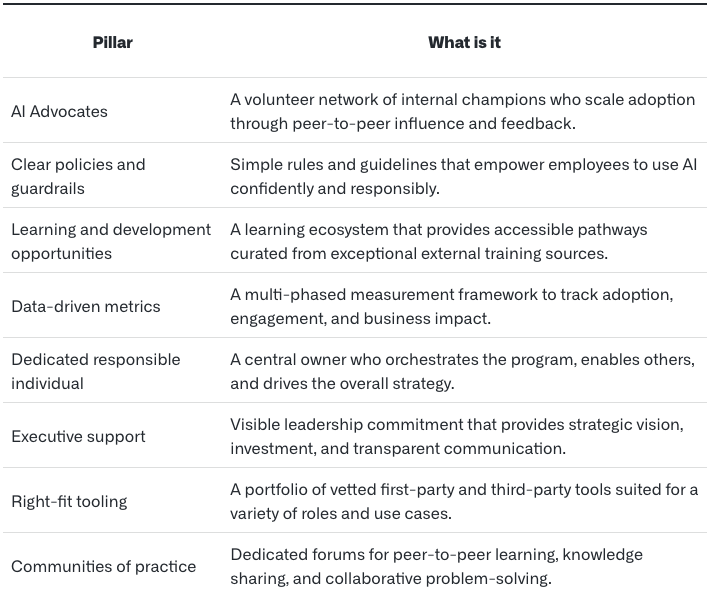- First AI Movers
- Posts
- Why Your AI Playbook Is the Only Blueprint That Actually Scales
Why Your AI Playbook Is the Only Blueprint That Actually Scales
SEO Description: AI transformation requires systematic playbooks—not pilots. Discover how to operationalize AI-native workflows. Learn now 🚀
Most companies stumble over AI transformation the same way—they throw pilots at the wall, chase shiny tools, and wonder why nothing sticks. You've already committed resources. You've hired consultants, bought licenses, and launched trials. But without a playbook—a systematic, repeatable framework for deploying AI-native operations—you're just stacking expensive experiments, not building sustainable advantage.
Here's the uncomfortable truth: AI transformation isn't a tech problem; it's an operating model problem. McKinsey's research on agentic organizations shows that only companies that redesign work and workflows as AI-first—reverse-engineering processes to be AI-native—achieve durable competitive moats. If you bolt AI onto broken legacy workflows, you amplify dysfunction, not value.
What you actually need
Structure over chaos: An AI playbook defines exactly how AI capabilities move from pilot to production across people, technology, and governance.
Repeatability at scale: Standardized templates, checklists, and reference models ensure consistency across workstreams—no more one-off custom builds that can't scale.
Human+AI collaboration: The best frameworks embed human oversight at critical points while letting AI handle high-volume, low-judgment tasks.
Actions you can take today
Map your current state ruthlessly. Document what's actually happening—where AI is used, who owns it, and what's governed. Most orgs don't know their own AI sprawl.
Define your operating model pattern early. Choose decentralized (fast, messy), centralized (slow, controlled), or federated (balanced). Each has trade-offs—pick one and commit.
Build the playbook as you go. Don't wait for perfection. Capture what works, templatize it, iterate. Your first three use cases will teach you more than any external consultant.
Example: Real companies building playbooks right now
GitHub's internal playbook for AI enablement centers on eight pillars: advocates, clear policies, learning paths, metrics, a dedicated responsible individual (DRI), executive support, right-fit tools, and communities of practice. They didn't wait for a finished document—they published their evolving playbook and iterated with feedback. That's how you scale fluency across thousands of employees.

GitHub’s operating model for AI enablement.
Similarly, Booz Allen's framework for enterprise gen AI layers infrastructure, platform, LLM, data pipelines, agent capabilities, and application UI—paired with LLMOps and governance. These aren't one-size-fits-all; they're starting points that companies customize as they learn what creates ROI in their context.
Limits & Fixes
Constraint: Playbooks can ossify into bureaucracy if you treat them as "done." AI evolves weekly; your playbook needs regular updates, not annual revisions.
Mitigation: Assign a DRI (like GitHub does) who owns the iteration. Schedule quarterly reviews tied to business metrics, not abstract benchmarks. Kill what doesn't work, fast.
Don't let another quarter slip by while your teams improvise AI in isolation. Start documenting your framework—governance, enablement, measurement—and socialize it internally. The best playbooks aren't built in secret by consultants; they're co-created with the people who'll use them. That's how you move from expensive pilots to AI-native operations that compound advantage.
Ready for AI traction, not hype? Audits, automations & agents—tailored to your team. 👉 Book here
Looking for more great writing in your inbox? 👉 Discover the newsletters busy professionals love to read.
My Open Tabs
Even in a world with superintelligent systems, humans will continue to create new problems, ask fundamental questions, and compete in distinctly human endeavors—just as Formula 1 will feature human drivers even when robots can drive faster. The hybrid future includes spatial intelligence through large world models enabling immersive virtual-physical environments for work, education, and healthcare.
Reply